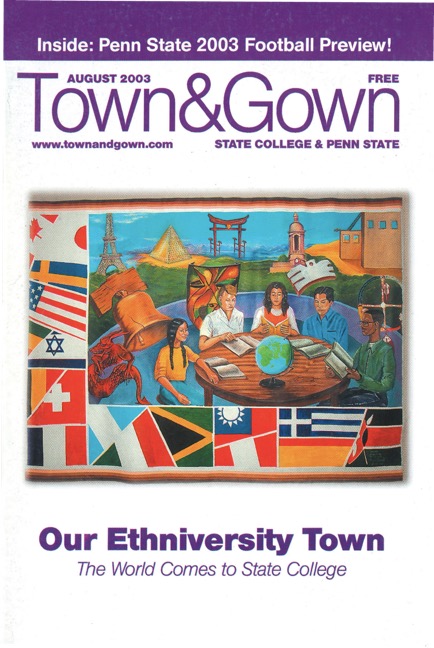
no description

no description
The new millennium had barely begun when the terrorist attacks of September 11, 2001, gripped the country — and State College. County emergency services went on high alert, flights were grounded, people lined up to give blood, and that week’s Penn State football game against Virginia was postponed.
The early part of the decade saw a major shift in Centre County’s employment base from manufacturing to services. C-COR.net Corp. laid off half of its 520 local employees in 2001, and MuRata Electronics North America also slashed its State College workforce. Corning Asahi laid off its last 1,000 employees here in 2003 and closed the local plant.
Times got a bit tougher late in 2007, when the worst U.S. economic downturn since the Great Depression also hit Centre County. Although the university continued to provide a solid economic base, new Penn State graduates faced a challenging job market, and former manufacturing workers still struggled. At the same time, the Marcellus Shale gas boom expanded to northern Centre County, causing bitter arguments between those who wanted the economic benefit of hydraulic fracturing — “fracking” — and those who worried about its environmental impact.
In 2000, Penn State unveiled its plans for developing West Campus. Six years later, the massive Westgate Building spanned North Atherton Street, connecting the two campuses and providing a home for the booming College of Information Sciences and Technology. In 2001, a $93 million upgrade made Beaver Stadium the nation’s second-largest on-campus stadium, with a capacity of 107,501. In 2003, the university agreed to sell Circleville Farm to housing developers, much to the dismay of locals who enjoyed hiking there.
Retail options expanded as Target was completed in 2000 to anchor The Colonnade; Best Buy opened in 2001 and Wegmans in 2002. The popularity of outlying shopping centers led to the closure in 2008 of 88-year-old O.W. Houts, which had sold everything from furniture to pickles in a maze of buildings at College and Buckhout.
The new State College Municipal Building opened in 2001, the new Schlow Library in 2006, and the renovated State Theatre later that year, along with the first State College Spikes season. In health care, Centre Volunteers in Medicine began services in 2003, followed by the Bob Perks Cancer Assistance Fund in 2006 and Geisinger Gray’s Woods in 2007. That February, the Lady Lions held the first Think Pink game to raise funds for breast cancer research. In 2008, most local workplaces, bars, and restaurants became smoke-free under a new state law.
The long-awaited construction of Interstate 99 from Bald Eagle to State College was plagued by controversy, first with a valley vs. ridgetop routing battle (ridgetop won) and then by the unearthing of acidic pyrite rock. After $83 million in remediation work, the highway finally opened in 2008.
Centre County’s population continued to grow, reaching almost 154,000 by the end of the decade — almost twice the population in 1960. Due in large part to the influx of Penn State students from other parts of the country and around the globe, the county’s population was becoming more diverse, with 5.2 percent of residents being Asian, 3 percent of residents being Black, and 2.4 percent Hispanic or Latino. Although 89.4 percent were white, that was a far cry from the 99 percent white in 1960. Diversification continues to this day.
Receive all the latest news and events right to your inbox.
403 S. Allen Street
State College, PA 16801
Phone: 814-238-5051
